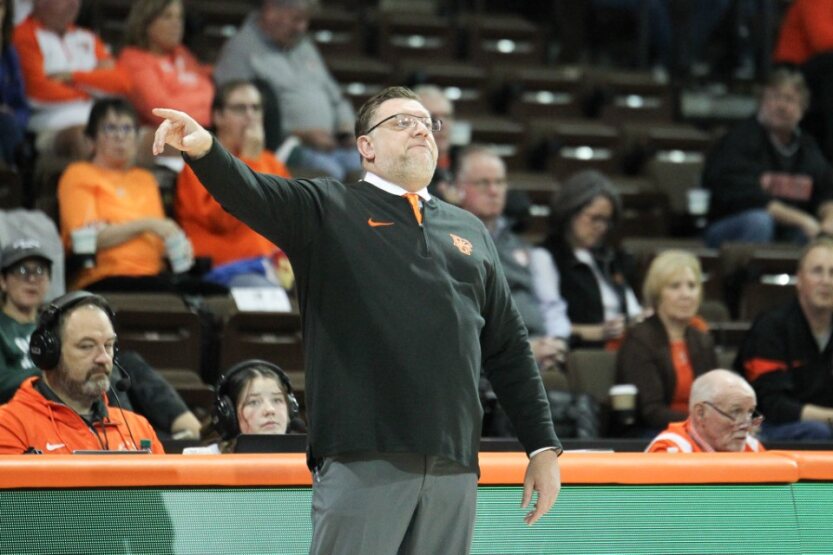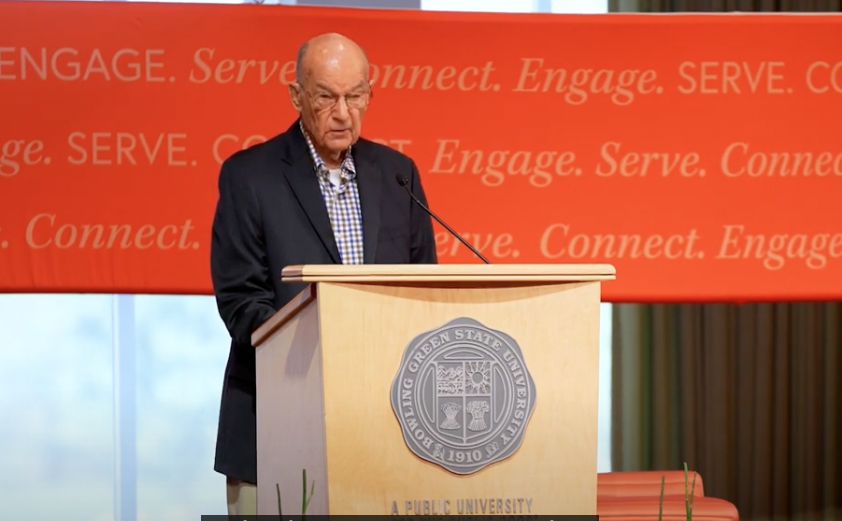There’s something about Fort Meigs. Fort Meigs has stood for nearly 200 years on the southern bank of the Maumee River. And throughout those 196 years, there’s been some sort of human activity. Even before it was built, humans have been on the land. There is evidence from the personal diaries of soldiers and officers of the U.S. Army that when the fort was built in 1813 human remains were uncovered – the skeletons of Native Americans who had been laid to rest in the area. Founded on Feb. 2, 1813 by General William Henry Harrison, and named after the Governor of Ohio at that time (Return Jonathon Meigs), Fort Meigs was to act as a temporary supply depot and staging area for an invasion of Canada during the War of 1812. However, it became an even more integral part of the War of 1812 and the center of operations in the Northwest Territory when the British laid siege on the fort May 1, 1813. For four days the British bombarded the fort until May 5, when the Kentucky Militia arrived as reinforcements for the U.S. Army. The British finally lifted their siege and retreated to Canada on May 9, only to return in July of that same year to lay siege on the fort again. They did not succeed and the British were forced to retreat to Canada, again, after taking heavy losses. On Sept. 10,1813, Commodore Oliver Hazard Perry won a vital naval battle that gave the United States the upper hand in the Northwest Territory. After that, Fort Meigs was not needed to the same extent and it was dismantled and replaced with a small stockade to act as a supply depot and to protect the Maumee rapids from enemy forces. Historians call this Fort Meigs II. It was about 50 square yards and only required 200 men to run, unlike the original fort, which required around 2,000 men. Fort Meigs was formally abandoned by the United States in May 1815. After the war, families whose farms had been destroyed used the blockhouses in the fort. They stayed there as they rebuilt their farms, said Rick Finch, site manager at Fort Meigs. In fact, many of the original homes in Maumee and Perrysburg used timber from the original fort. Then the site was abandoned for about 25 years. In 1840, it witnessed one of its largest crowds ever when a political rally was held for General Harrison, who was running for president. Historians have guessed that over 40,000 people arrived for the rally. Currently, that many people don’t visit the site in a year. Doug Bahnsen put it in perspective while visiting the fort for an event. ‘We haven’t had 50 and 60 thousand people here for an event since then, I think,’ he said. ‘And people can drive in an air conditioned car to get here.” Bahnsen is a local living history interpreter who educates others on the local history by acting it out. With a large, fluffy white beard, a plaid shirt, and suspender-supported khakis, Bahnsen brings an anachronistic feel to the modern museum where he sits talking. Occasionally, as he wanders around he can be heard playing a few notes on a harmonica he keeps in a plastic bag in his pocket. Bahnsen said he likes to focus on the cultural side of the history and how people lived and interacted during the time when northwest Ohio was just a frontier. The year after Harrison’s political rally, the land and the remnants of Fort Meigs were leased to the Hayes brothers – Timothy, Thomas, and Michael. However, Timothy was the only one to actually live on the land. The brothers were very aware of the historical significance of the land, and they made efforts to preserve it. They only allowed cattle and other farm animals to graze on the land that was originally part of the fort. This protected the grand traverse, a large dirt barrier that protected troops from British bombardment, from being plowed into oblivion. In fact, the grand traverse still exists today within the reconstruction of the fort. Timothy also took great pride in preserving the land and the history associated with it. He would readily offer historic tours, and he encouraged visitation to the site. Because of this, Timothy became known as the ‘Wizard of Fort Meigs.’ The Hayes brothers’ efforts made preservation of the fort possible. They made people aware of its history and brought attention to it, without destroying it. According to Judy Justus, a local historian and president of Perrysburg’s Area Historic Museum, a granddaughter of the Hayes’ still lived in the area until recently. When she was asked about her relatives’ efforts to preserve the land, she recalled that they were very protective and wouldn’t let them sled on the hills in the winter. Nevertheless, people seem attracted to the area, and keep coming back. Justus said even though the land was swampy, people were attracted to it, and came back and built the towns of Maumee and Perrysburg. And when they drained the land they found rich, dark soil that was ideal for farming. By 1840 the surrounding land was almost completely drained. On Sept. 1, 1908, the large obelisk monument that can be seen from outside the fort was dedicated by a local veteran of the Civil War to the fallen soldiers of Fort Meigs. At the end of World War I, on Sept. 13, 1919, there was a celebration held at Fort Meigs that was put on by the Maumee Valley Pioneer and Historical Association. The area was influenced more by the fort than is apparent. Wood County was named after the chief engineer of Fort Meigs – Eleazar Darby Wood. Almon Gibbs, who fought during the War of 1812 at Fort Meigs, returned later to become postmaster of Maumee. There’s a street named after him today. The people of the area want others to be aware of Fort Meigs. ‘State Route 65 used to run directly down the middle of the fort. There used to be a drive that surrounded the monument so you could get off the main road and stop at the monument,’ Finch said. Finch grew up in Michigan and had friends who participated in Muster on the Maumee, a large living history event at Fort Meigs. He’s held the position of site manager for the past 4 years. In the late 1960s, the Ohio Historical Society began to reconstruct Fort Meigs. In 1974 they opened the museum to the public. The reconstruction was one of OHS’s major projects to commemorate the nation’s bicentennial. Then in 2000 they rebuilt the stockade that enclosed the fort with fresh hand-hewn timbers and repaired the seven blockhouses and the quartermaster’s building.’ ‘ There are also live interpreters who give a personal perspective to the history of the fort. Made up of volunteers and employees, they are most obvious during the living history events held at the fort. These mainly consist of volunteers like Hannah Grohowski. A student at the University, she has volunteered at Fort Meigs since December of 2005, but has known about the fort since she was 5 years old. Grohowski says she originally volunteered at the fort because she couldn’t attend a field trip with her classmates, so she wanted to do them ‘one better’ and asked to sign up as a volunteer. To her, this was a way of getting away from her ‘immature high school acquaintances.’ So far, she loves it. Grohowski enjoys learning about the history of the fort, but loves meeting the people through events even more. ‘The people who work there and the other volunteers are wonderful. They are so knowledgeable and fun,’ she said. ‘They know what they are doing. Having people like that around makes the atmosphere great.’ Tony Szymanski volunteered at Fort Meigs for 11 years before becoming a paid interpreter. He’s worked as an interpreter for the past three years. Fort Meigs interests him because he’s always been interested in history, and he enjoys telling people about the history of the area. He said he also likes to camp and to shoot the cannons and rifles. Szymanski stands in the Quartermaster’s building, dressed as an assistant to the Quartermaster. When more people enter the building he dresses up as a rifleman. Over the past 14 years he’s made a lot of the tools he uses as an interpreter, or bought them from other re-enactors. He says he really enjoys showing people how to use historic equipment, whether it’s for cooking or crafts. That seems to be the theme that brings people to the fort, a desire to understand the history and to live it. Justus thinks this is what makes Fort Meigs such an attractive place for people today. ‘They’re there, they’re in history, they’re not just staring at a display or looking at a book. They’re in the middle of it,’ she said. Justus was a teacher for 25 years and firmly believes that people of today need to understand history: ‘[They] need to learn our history so they know where we’ve been so they know where they are.’ Justus says that Fort Meigs is one of the two most-visited historical sites visited in Ohio, along with the Armstrong Museum. She believes it easily attracts people because of its eclectic history and activities. They’ve had Native Americans on the site, they have war re-enactments, crafts and games, and the new museum. They show history in a wonderful manner. It’s rich and alive, she said. The site is not likely to lose its local support any time soon. Whether it’s the history, it’s tactical importance during the War of 1812, or just the fact that it’s the largest wooden reconstructed fort within the nation, Fort Meigs isn’t likely to be abandoned anytime soon. There certainly is something about Fort Meigs.
Latest Stories
- BG baseball's offense limited in 6-4 loss to Western Michigan
- JUCO forward Marcus Johnson transfers to BGSU
- BG's sixth-inning surge gives Falcons an 8-3 win against Western Michigan
- University announces expansion of Thompson Working Families Scholarship program
- BGSU baseball vs Western Michigan series preview: Top two teams in the MAC set to battle at Steller Field


















